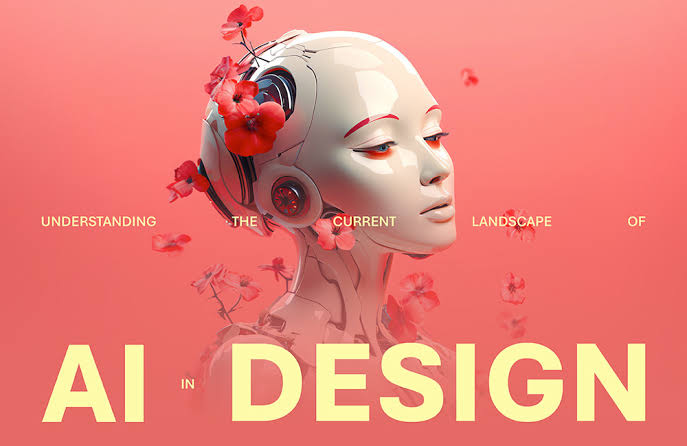The future of graphic design lies in collaboration between humans and intelligent systems. Designers who embrace AI not as a competitor but as a creative partner will be best positioned to innovate and thrive in an evolving industry. Ultimately, AI is not replacing creativity—it is expanding it, opening doors to new possibilities that push the boundaries of visual communication.
Graphic design has always been a blend of artistic vision and technical execution. Traditionally, designers relied on manual processes to create visual concepts, but the rapid advancement of artificial intelligence has transformed the field. As of 2025, AI is not only streamlining routine tasks but also unlocking new levels of creative potential. From automated image editing to generative design systems, AI is reshaping how designers work, collaborate, and imagine possibilities. Far from replacing human creativity, AI serves as a partner that enhances efficiency and expands artistic boundaries.
Automating repetitive tasks
One of the most immediate benefits of AI in graphic design is automation. Many tasks that previously consumed valuable time can now be completed almost instantly. Background removal, object detection, color correction, and resizing for different formats are now handled by AI-powered tools. Platforms such as Adobe Photoshop, Canva, and Figma incorporate AI features that allow designers to edit and adapt visuals with just a few clicks.
For example, instead of manually adjusting multiple image sizes for different social media platforms, AI tools can automatically generate optimized versions. Similarly, tasks such as cleaning up images, generating mockups, or aligning design elements are simplified through AI assistance. This efficiency frees designers to focus on conceptual and strategic aspects of projects rather than technical details.
Generative design and creative exploration
Beyond automation, AI is pushing the boundaries of creativity through generative design. Generative systems use algorithms to produce countless variations of a design based on input criteria. Designers can specify parameters such as colors, styles, or composition rules, and AI generates multiple options in seconds. This process allows for rapid exploration of ideas that might take days to achieve manually.
Generative art platforms, such as those powered by diffusion models and GANs, enable the creation of entirely new aesthetics that blend human input with machine innovation. For instance, AI can reinterpret classic art styles, merge unexpected textures, or create futuristic design concepts. Instead of limiting creativity, these tools serve as idea amplifiers, giving designers new perspectives to refine into final pieces.
Personalization and adaptive design
AI also makes it possible to create highly personalized and adaptive designs. In marketing and branding, personalization is crucial for connecting with diverse audiences. AI-driven systems can analyze customer data, predict preferences, and automatically adjust visuals to suit different demographics or contexts.
For example, an AI tool can generate tailored ad creatives for different markets, adapting imagery, typography, and color schemes to align with cultural expectations. Similarly, websites and mobile apps increasingly rely on AI to dynamically adjust layouts and visual elements based on user behavior, creating more intuitive and engaging experiences.
Collaboration between humans and AI
AI is not a replacement for designers but rather a collaborator. By handling time-consuming technical tasks, AI allows designers to concentrate on strategic thinking, storytelling, and emotional resonance. Many designers now view AI as a creative partner that sparks inspiration. For instance, AI can suggest color palettes, typography pairings, or layout structures that the designer may not have initially considered.
This collaborative dynamic also empowers non-designers. Small businesses and entrepreneurs who lack design expertise can use AI-driven platforms to produce professional-quality graphics quickly. While professional designers still play a critical role in high-level creative direction, AI democratizes design by making it accessible to broader audiences.
Enhancing speed and productivity
The pace of content creation has accelerated dramatically in the digital age. Brands are expected to produce a constant flow of visuals across social media, websites, and advertising channels. AI tools help meet this demand by drastically reducing turnaround times.
For example, AI-powered video and animation tools can automatically generate motion graphics or adapt static designs into dynamic content. Similarly, AI-assisted prototyping accelerates the process of developing user interfaces, allowing teams to move quickly from concept to implementation. This increased speed gives designers more flexibility to experiment, iterate, and deliver projects without compromising quality.
Ethical considerations and originality
Despite its advantages, the use of AI in graphic design raises important ethical and creative questions. One concern is originality: when AI generates designs based on existing datasets, it may unintentionally replicate or mimic existing works, leading to debates over authorship and copyright. Designers must ensure that AI outputs are used responsibly and refined with human oversight to maintain authenticity.
Another issue is over-reliance on automation. If designers depend too heavily on AI tools, there is a risk that originality and human intuition could be overshadowed by algorithmic patterns. Balancing efficiency with artistic intent is essential to preserving the integrity of design as a creative discipline.
AI and the future of design careers
Some fear that AI may replace human designers, but evidence suggests otherwise. While AI excels at handling technical execution, it lacks the cultural awareness, empathy, and conceptual storytelling that define great design. Instead of eliminating jobs, AI is shifting the role of designers toward higher-level creative thinking, problem-solving, and brand strategy.
In fact, new career opportunities are emerging at the intersection of AI and design. Roles such as AI design specialists, creative technologists, and generative art directors are becoming more common, highlighting how human expertise remains central even in AI-driven workflows.
Conclusion
The role of AI in graphic design is both practical and transformative. By automating repetitive tasks, enabling generative creativity, and facilitating personalization, AI enhances the speed, efficiency, and depth of design processes. It empowers both professionals and non-designers, while also raising critical questions about originality, ethics, and authorship.
